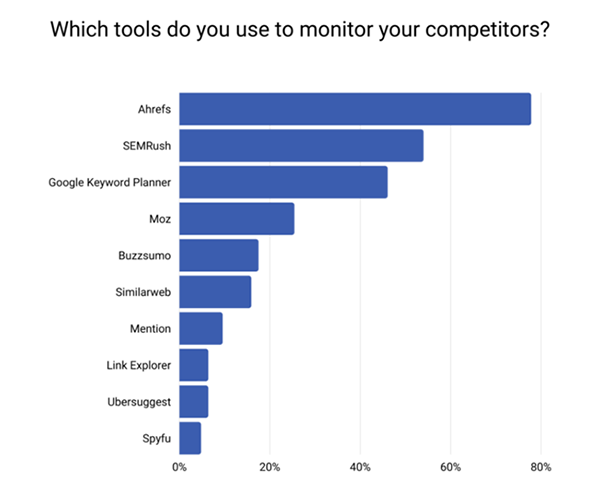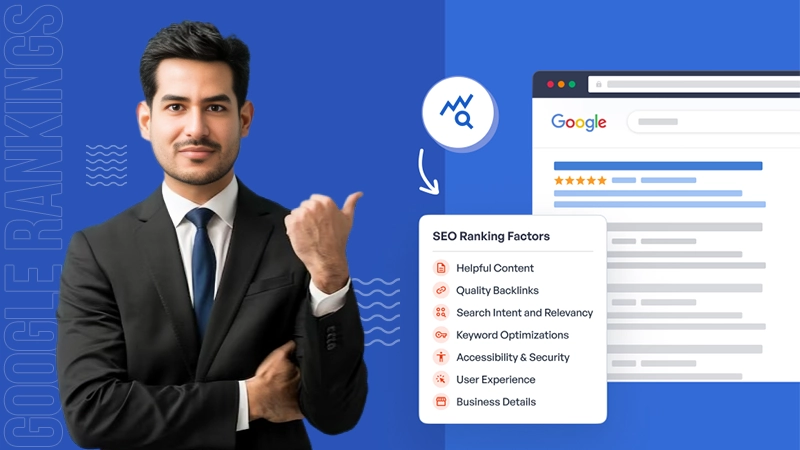How Do You Perform SEO Competition Analysis for the Ultimate Success?
No matter the growth of your business, you’ll be a step behind if your competitors try harder. Enterprises can’t operate in isolation today, making competition analysis a significant part of the growth strategy.
If you are a renowned brand or have just laid the foundation of your e-commerce business, know that other organizations work tirelessly. You must do something to be a step ahead of them.
Creating an advantageous standing means ensuring a higher position in search results, more traffic to your site, and an improved bottom line. Since your business rivals are operating in the same niche, analyzing their strategies with insights from the best SEO agency in Delhi helps understand your potential customers and their needs better.
But, how to do competitor analysis? Here’s the complete guide offering details about performing SEO competition analysis to outrank your competition.
Identify Your Top Competitors
In so many ways, online and offline ecosystems are similar, but digital competition comprises more diverse players. When there are numerous players, all competing for the same visibility, it’s vital to take all of them into account to understand the relevance of the space. The keywords they are targeting will help you identify your top competitors.
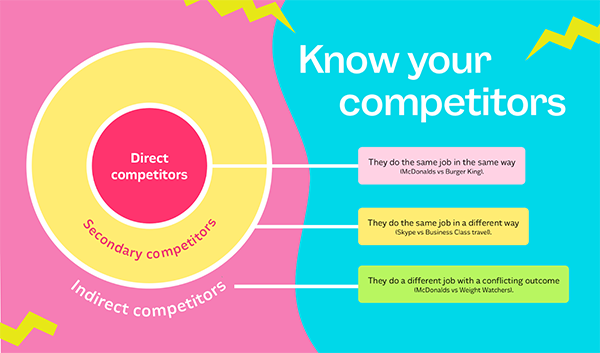
To identify your top rivals, you must understand your “relevant competitors” first. They can be divided into three types.
- Direct Competitors: selling the same products and offering the same services as you – these opponents target the same audience as yours. Take the example of Apple vs Samsung – they both manufacture smartphones and target the same audience, especially in the high-end market.
- Indirect Competitors: offer the same products and services, but their target audience or market is slightly different. Sometimes, they offer different products, but they are so relevant to yours that they tap into your audience base. Consider Domino’s Pizza vs. Mcdonald’s – both serve in the fast-food industry, but Domino’s focuses on pizza and McDonald’s specializes in burgers. They approach the same audience but with different products.
- Semantic Competitors: may not actually be offering a product, but only rely on juicy, newsworthy information to be more visible to your target audience. Take the example of traditional advertising vs influencer promotion. Influencers often create content for the same audience that businesses target using traditional ads.
How Do You Identify Your Top Competitors?
Once you know the types, you need to consider criteria such as market share, domain authority, and keyword overlap of your direct and indirect competitors. A good way to search for your opponents is through an SEO tool.
Many are available these days, but a quick Ahrefs review will confirm that it serves amazingly well when searching for your top competition. Here are the reasons it is the best tool for marketers:
- It conducts comprehensive SEO competitive examinations to discover new keywords and identify traffic opportunities.
- Use the tool to identify your main organic rivals, which are usually businesses you are up against in Google’s top 20 search results.
- Create a list while considering their domain authority – those having the same DA as you are the most relevant.
- Also, consider the number of traffic they already get to get an idea about their market share.
- Finally, check who ranks for the same keywords you are targeting.
STATISTICS
The graph shows which tools are most used by businesses to analyze competitors.
Conduct Thorough Competitive Keyword Research
Knowing your top keywords and identifying what your competitors are ranking for have a huge impact on your overall Search Engine Optimization strategy. Competition analysis is vital because it also helps identify keywords your rivals are ranking. Here’s what you can do:
- Once you create a list of those high-ranking keywords, you can reverse engineer their strategy and outrank them.
- A keyword competition examination tool will make it easier. You simply need to enter your rivals’ domains and look for all the keywords they rank for.
- Sort keywords by volume and check them one by one. The goal is to identify unbranded keywords you may not be ranking for.
- Some SEO tools now also simplify it by helping you compare your site to your rivals to identify keyword gaps.
- Be sure to invest in keywords that are relevant, valuable, and high-volume in searches. Pick keywords that you know will convert considering your specific niche.
THINGS TO CONSIDER
Long-tail keywords make up 70% of all search traffic, suggesting that users are getting more specific.
Carefully Evaluate Your Competitors’ Content
It’s not enough to identify keyword gaps, you must also understand what sort of content your competitors are putting up to rank for those keywords. A look into their promotion quality, types, length, etc., matters a lot. It also helps identify what works for their audience and where it needs improvement.
When auditing your rivals’ content, consider if they focus mostly on infographics, blog posts, videos, or a mix of everything. Identify the format that works most for their audience.
Then, analyze the length of their advertising pieces – do they post long-form articles, or go with shorter, more scannable pieces? Finally, pay attention to their publishing frequency, which will help you design your own publishing schedule for success.
Evaluating others’ projects is also vital to discovering gaps, or topics they may have not already covered. You can fill that gap by creating high-quality promotions, and if you fill that knowledge void effectively through your content marketing campaign, you will be able to present yourself as a thought leader and ultimately improve your rankings.
Pay Attention to On-Page SEO Factors
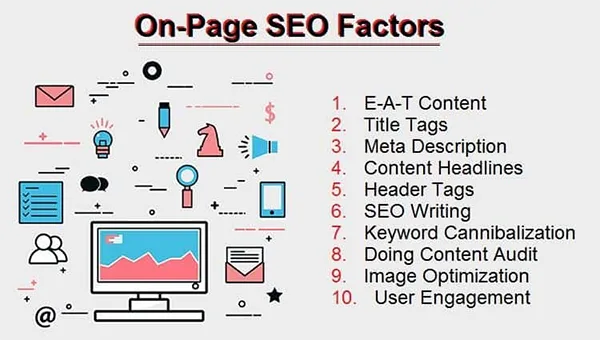
Solid analytics require you to focus on various on-page SEO elements. This gives insights into where your Search Engine Optimization plan stands in comparison to that of others.
Some of the most relevant elements to focus on during On-page SEO competitor research are page titles, keyword usage, meta descriptions, page speed, header tags, and internal linking structure.
All these factors determine that it is easy for search engines to crawl your website. Other things to factor in are:
- If you use the correct tags and ensure your website loads quickly, search bots can crawl your page more effectively.
- However, the site and URL structures are also vital in determining the crawling and performance of a website.
- The site structure involves paying attention to your competitor’s arrangement of their pages. It means you need to check the navigation structure as well as the interlinking structure.
- The URL structure deserves attention and involves examining the URL hierarchy system your rivals use throughout their sites.
Imagine you have a small business selling household supplies online, and your direct competitor is an e-commerce store dealing in similar items.
You must evaluate their site structure and URL hierarchy to understand organizing those items by functionality instead of brand name.
This strategy is useful for customers as they can use filters to shortlist results instead of going through several pages.
Remember, the site structure is vital because it improves overall site health, including stronger category organization, and better crawlability. It also impacts user experience and clear details about different pages.
Be Sure to Review Technical SEO
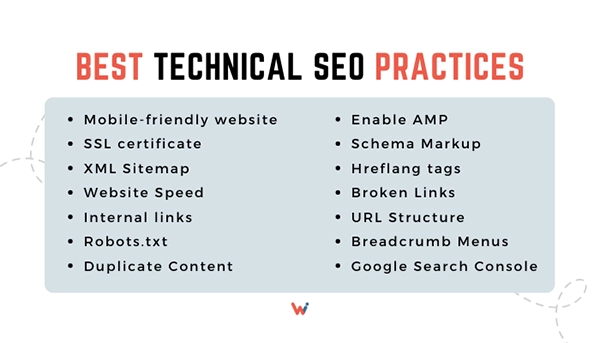
Just like paying attention to on-page SEO, it’s vital to check your competitor’s approach to technical SEO. Maintaining a good page load speed continues to be the most significant factor, as it affects the user experience, which can make or break your search engine rankings.
To improve your business’s technical Search Engine Optimization, keep the following factors in mind:
- Check the time it takes for your opponents’ sites to load. Various online tools are available to conduct the audit – some best include GTmetrix, Google PageSpeed Insights, and WebPage Test.
- Paid SEO competitor analysis tools can also help with the same and offer detailed insights into page size, load time, number of requests, and overall performance scores. You may even get suggestions to improve your website speed.
- Page loading speed is impacted by various factors, including traffic volume, server location, optimization, and caching. Therefore, your rivals’ sites should be checked for all these factors to get a complete picture.
- Analyze the mobile-friendliness of other pages. Remember, if your competitor has put together a website that is highly responsive and performs exceptionally well on mobile devices, but your website lacks in this department, you just can’t compete with them to secure better rankings.
Google’s very own Mobile-Friendly Test will help you get an idea about that, as it evaluates the way websites handle various requirements for mobile usability, such as viewport configuration, text size, content width, and clickable elements.
Analyze Backlink Profiles for More Information
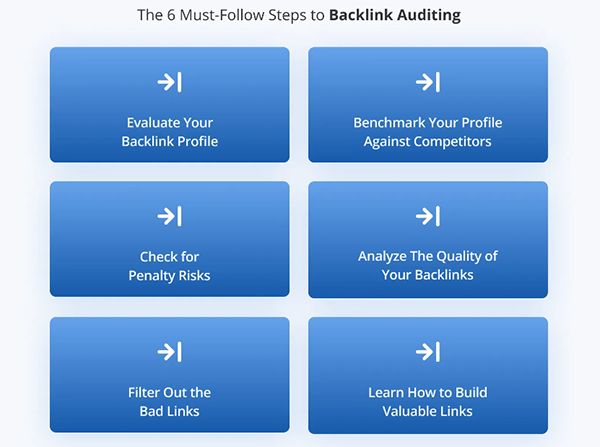
Backlinks are vital because they tell search engines the true value of your content. If your opponent has a robust backlink profile, you can’t compete with them for rankings. You must find those gaps and build a stronger backlink profile for your website.
Various Search Engine Optimization tools help you with link reports. They are useful because they also make it easier to identify any spammy, low-quality links to your website. The trial helps unveil potential linking opportunities that you may have missed earlier.
You can also benchmark your performance by running a link analysis and comparing it with your competitors’ link profiles. It gives you a better idea about your relative position in your niche by analyzing metrics, including referring domains, number of backlinks, and domain authority.
Moreover, you must analyze the backlink profiles of your rivals to understand industry trends, which becomes possible by identifying changes in backlinking patterns. This information is valuable and helps you refine your campaigns to outrank your opponents.
Pay Attention to User Experience
A well-rounded SEO tool designed to perform competitors’ analysis also enables you to examine how your rivals ensure a positive user experience. Here’s what to consider:
| Key Aspect | Evaluation Criteria |
| Site Navigation | Consider menu structures, internal linking, and overall information architecture. |
| Design and Layout | Examine responsive design, page load speeds, and visual hierarchy. Mobile-friendly, fast-loading sites with clear content prioritization. |
| Engagement Metrics | Analyze competitors’ bounce rates, time on site, and pages per session. |
Pay attention to these aspects and compare them with other businesses to see the way they handle design/layout, site navigation, etc., to optimize your campaign.
Monitor Social Media Integration
A business doing well on social media is likely to get more traffic to its website and improve its bottom line. If your rivals are enjoying more visibility on social media, you must reverse engineer everything to identify their tricks for boosting your business.
Using some well-rounded SEO software will help, as it simplifies social media integration. They allow you to add your competitor’s accounts to the tool to run a comparison and decode their strategies.
You may also be able to identify what types of projects go well with your targeted audience and what posting schedule makes the most sense. You can also consider social signals such as likes and shares to learn to increase your brand visibility and authority.
Conclusion
Considering your competitor’s approach, Search Engine Optimization truly helps you tweak your own strategy for the best results. Seek for areas where your approach needs improvement and any gaps in it.
Keep an eye on the kinds of content your rivals are producing, constructing links, and the overall layout of their websites. Make use of tools to see where you may improve by comparing your keyword ranks with your rivals and you will be better positioned to get the best out of your SEO campaign.

